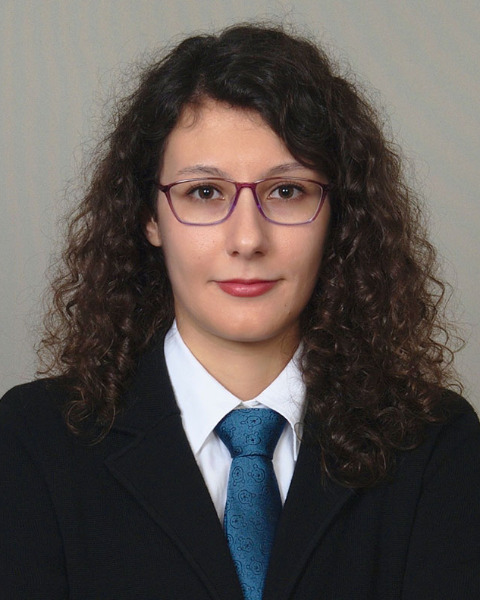HPB
56: Disrupting TNFR2 Signaling Improves Chemotherapy sensitivity in Pancreatic Cancer

Haleh Amirian, MD, MS
Post-Doc
University of Miami School of Medicine - Miami, FL, Florida, United States
Haleh Amirian, MD, MS
Post-Doc
University of Miami School of Medicine - Miami, FL, Florida, United States
Anna Bianchi, PhD
Computational and Cancer Biology Scientist
University of Miami School of Medicine - Miami, FL
Miami, Florida, United States- KR
Karthik Rajkumar, PhD
Post-Doc
University of Miami, United States - AA
Andrew Adam, MS
PhD Candidate
University of Miami School of Medicine - Miami, FL, United States - ID
Iago De Castro Silva, MD
Surgery Resident
University of South Florida, United States 
Ifeanyichukwu Ogobuiro, MD, MHS
T32 Surgical Oncology Research Fellow/Radiation Oncology Resident
University of Miami Miller School of Medicine, Sylvester Comprehensive Cancer Center
MIAMI, Florida, United States- SS
Samara Singh, BS
PhD Candidate
University of Miami School of Medicine - Miami, FL, United States - SM
Siddharth Mehra, Ph.D.
Postdoc
UM, United States - ED
Erin M. Dickey, MD, MBS
Post Doctoral Fellow
Department of Surgery, University of Miami Miller School of Medicine, United States - NN
Nagaraj Nagathihalli, PhD
Research Associate Professor
University of Miami School of Medicine - Miami, FL, United States - NM
Nipun B. Merchant, MD
Surgical Oncologist
Department of Surgery, University of Miami, United States 
Jashodeep Datta, MD (he/him/his)
Assistant Professor of Surgery
Department of Surgery, University of Miami Sylvester Comprehensive Cancer Center
Pinecrest, Florida, United States
Abstract Presenter(s)
Submitter(s)
Author(s)
We have recently described the novel role of neutrophil-derived tumor necrosis factor (TNF) in amplifying stromal inflammation and immune tolerance in the pancreatic ductal adenocarcinoma (PDAC) tumor microenvironment (TME). In particular, neutrophil-TNF promotes inflammatory polarization of cancer-associated fibroblasts (iCAF) via transmembraneTNF-TNFR2 interactions. Since iCAF polarization is a central regulator of chemoresistance in PDAC, we asked if targeting TNFR2 signaling might improve chemosensitivity in PDAC.
Methods: Data from the COMPASS trial comprising advanced PDAC patients with molecularly annotated objective response data to chemotherapy, as well as TCGA were queried. The effect of TNFR2 inhibition on iCAF polarization was examined using dual-reporter CAF system (IL-6=iCAF; α-SMA=myCAF). Preclinical modeling investigated the role of pharmacologic inhibition (using etanercept, TNFR2-Fc antibody) or genetic silencing (TNFR2KO) of TNFR2 on stromal organization. Survival experiments were performed using etanercept with/without gemcitabine+paclitaxel chemotherapy in orthotopic models.
Results: In COMPASS trial (n=149), enrichment of multiple TNFR2 signaling pathways was associated with disease progression on chemotherapy (P-adj< 0.05). In TCGA (n=178), overexpression of TNFR2 pathway transcripts was associated with worse overall survival (P=0.005) in PDAC patients. While TNFR2 is constitutively expressed in immune cells, cell-cell contact with neutrophils induces CAF-TNFR2 expression in vitro. Moreover, TNFR2 inhibition rescued the strong inflammatory polarization (IL-6hiα-SMAlo) of dual-reporter CAFs following neutrophil-CAF co-cultures in vitro. In orthotopic models, both pharmacologic TNFR2 blockade via etanercept, and systemic TNFR2 silencing in transgenic TNFR2KO mice, reduced stromal-tumor ratio via H&E, stromal fibrosis via Trichrome Blue, and myofibril organization using Sirius Red staining in tumor sections compared to respective controls. Intratumoral CD8+ T-cells from etanercept-treated mice demonstrated increased IFN-γ+ expression compared with vehicle-treated mice. Finally, treatment of mice with etanercept combined with Gem-Pac chemotherapy nearly doubled median survival (44d vs 25d vs 25d, P< 0.001; Fig) compared with either chemotherapy alone, etanercept monotherapy, or vehicle arms.
Conclusions:
TNFR2 signaling is a central regulator of chemoresistance in PDAC. Strategies to disrupt TNFR2 signaling may disrupt stromal inflammation, unleash antitumor immunity, and improve chemosensitivity in PDAC patients.
Learning Objectives:
- describe the novel role of neutrophil-derived tumor necrosis factor (TNF) in amplifying stromal inflammation and immune tolerance in pancreatic ductal adenocarcinoma (PDAC)
- describe COMPASS trial TNF-related results
- describe the effects of disrupting TNFR2signaling in pancreatic cancer
